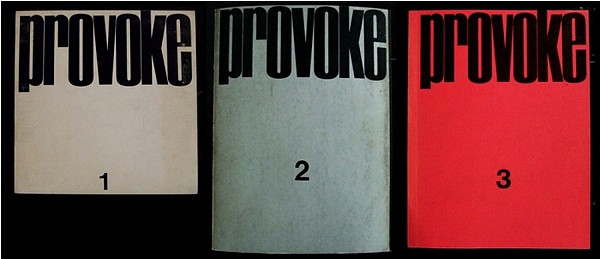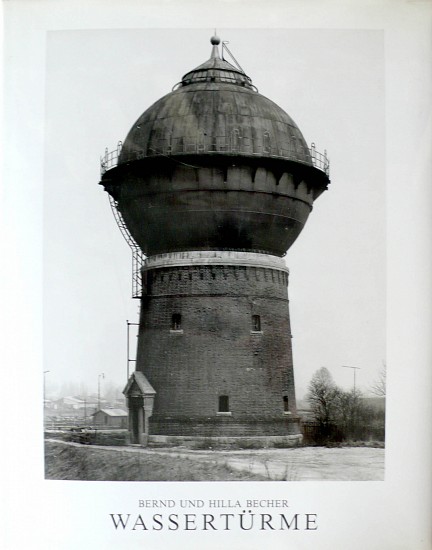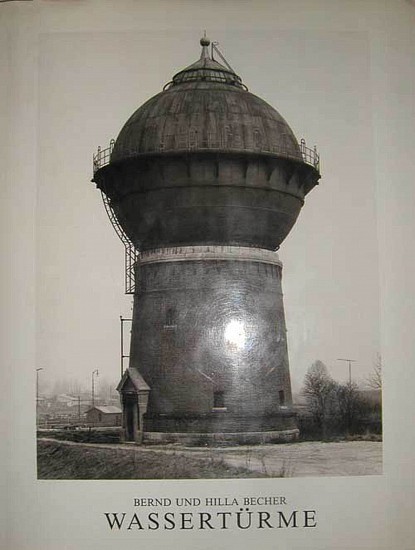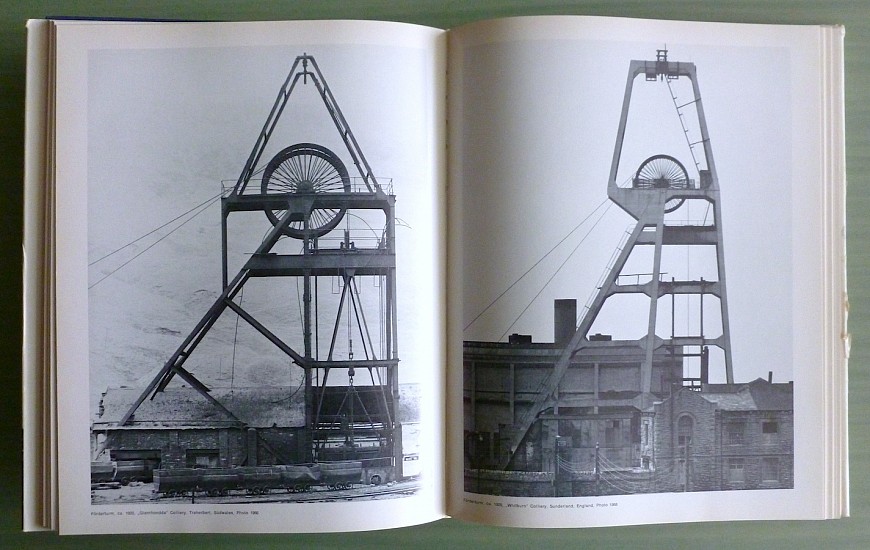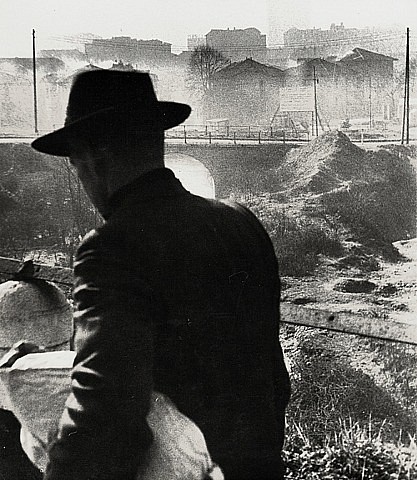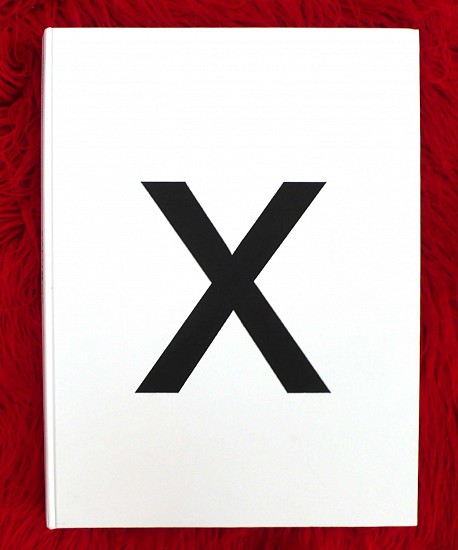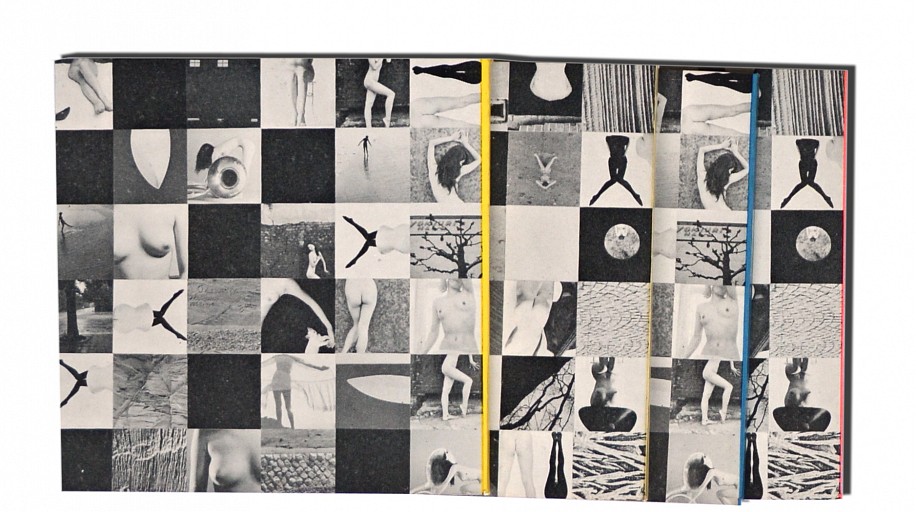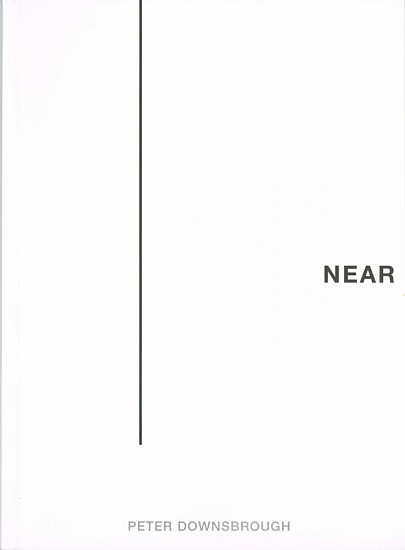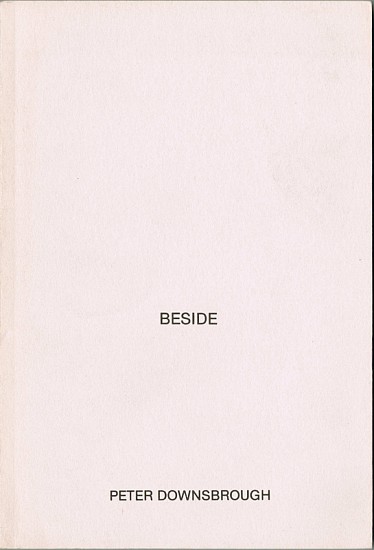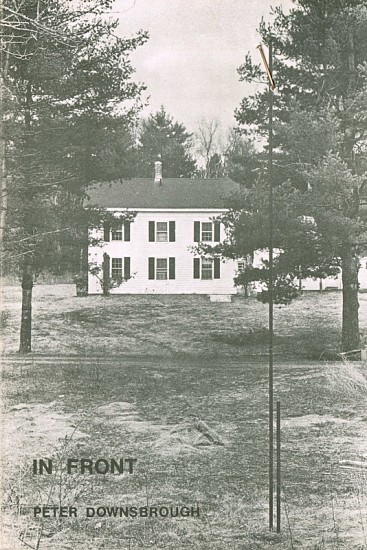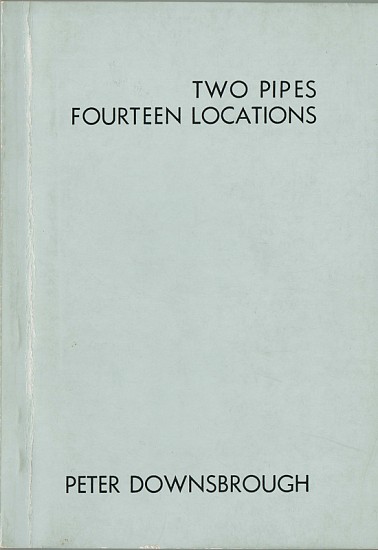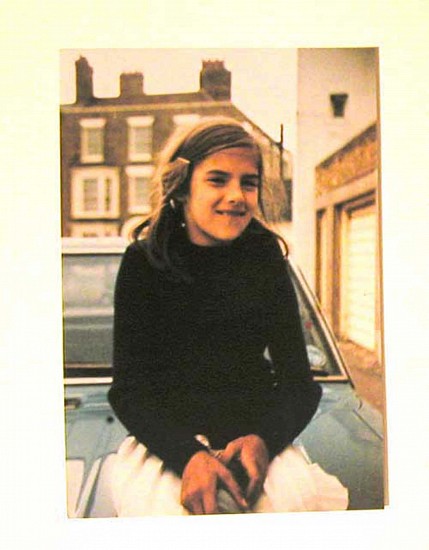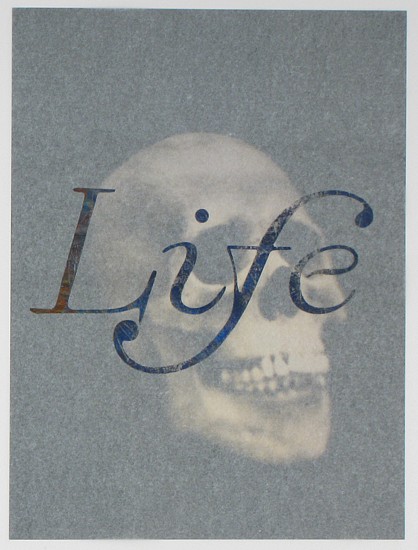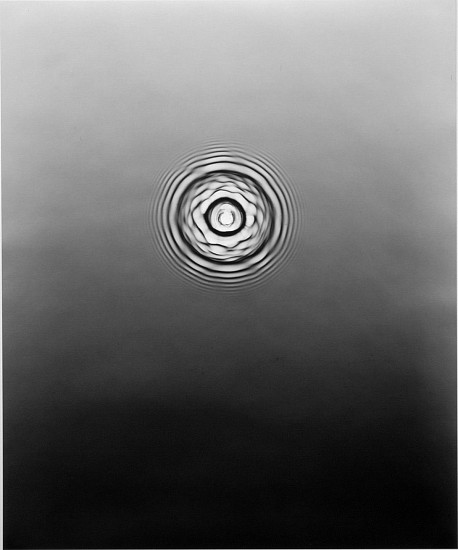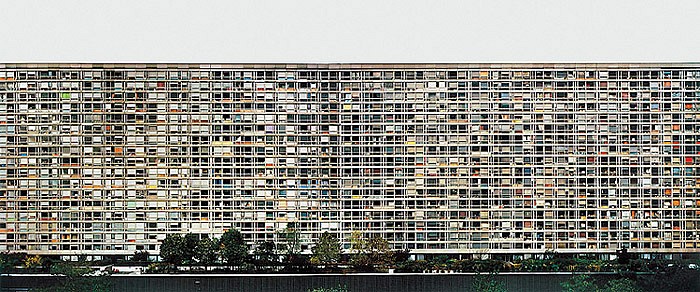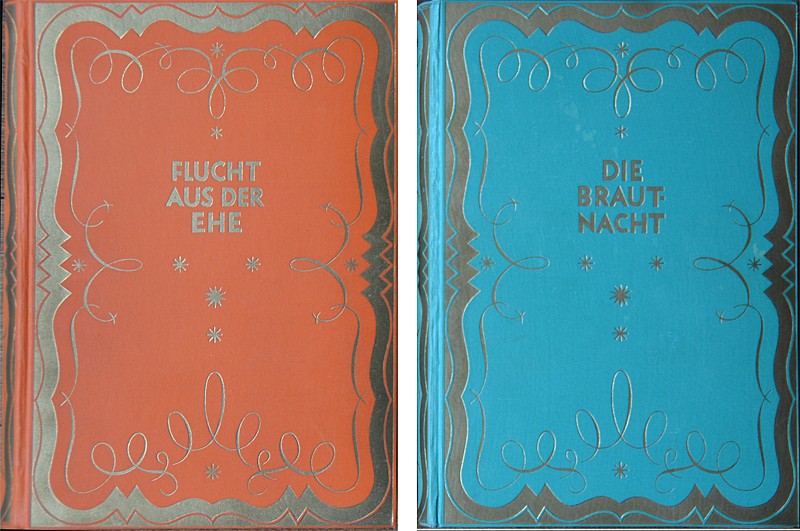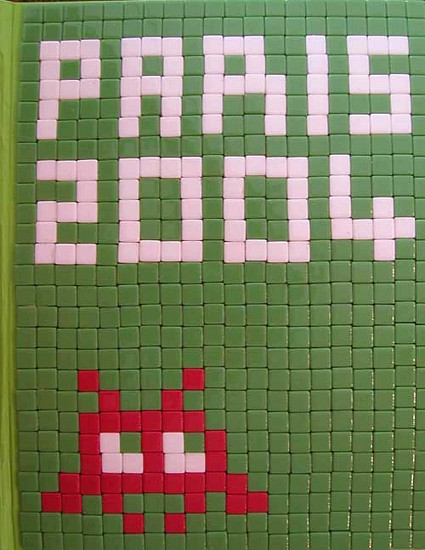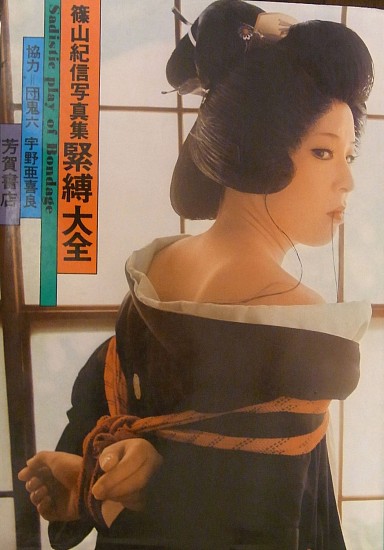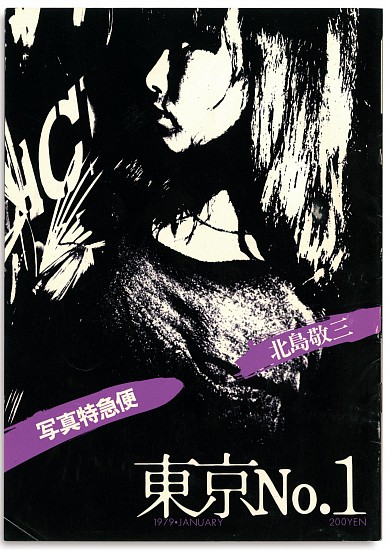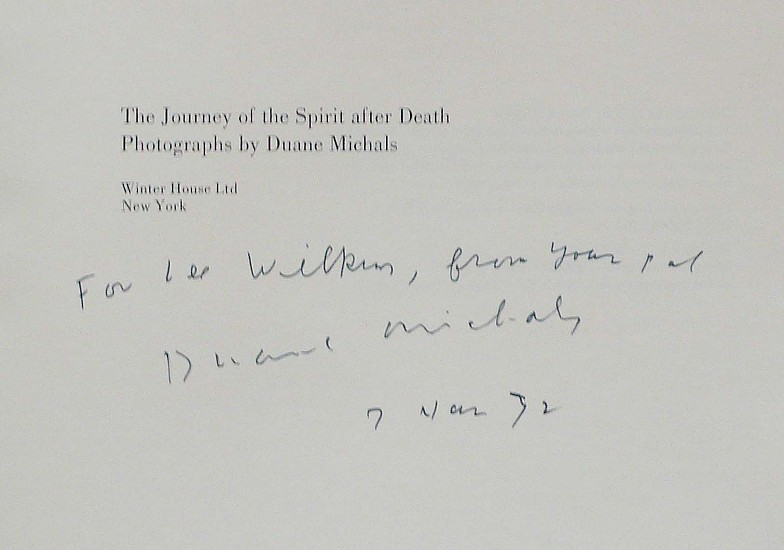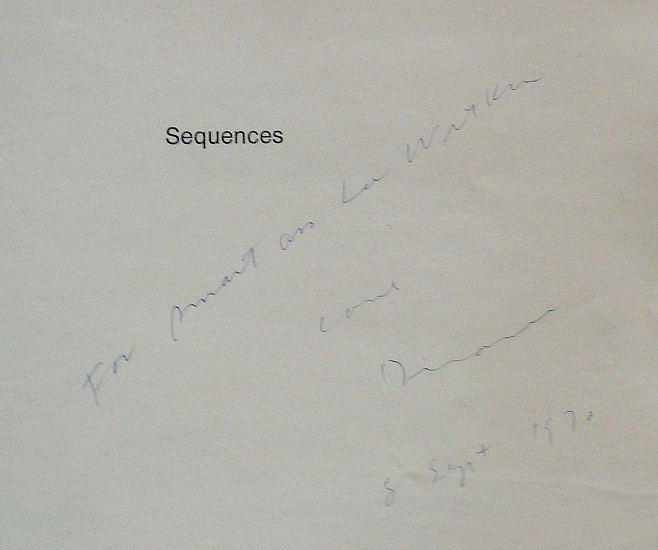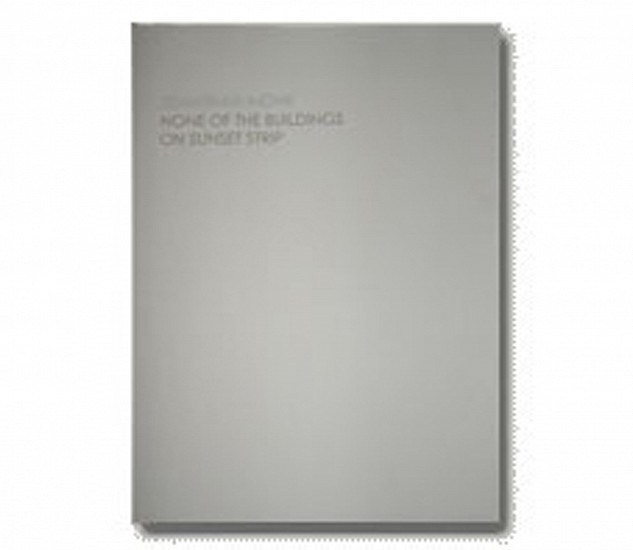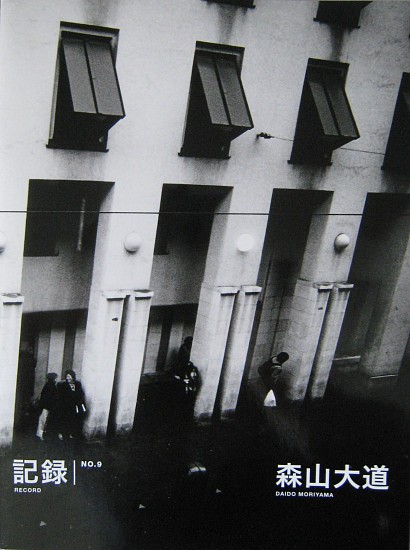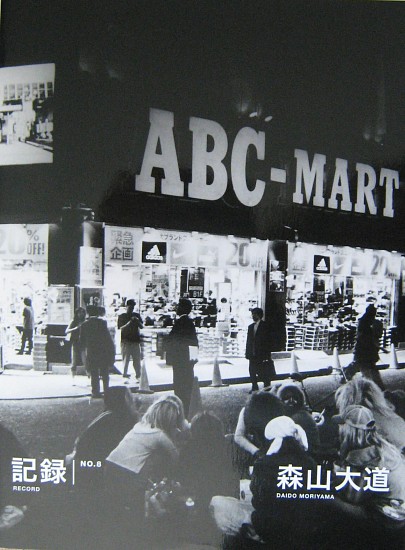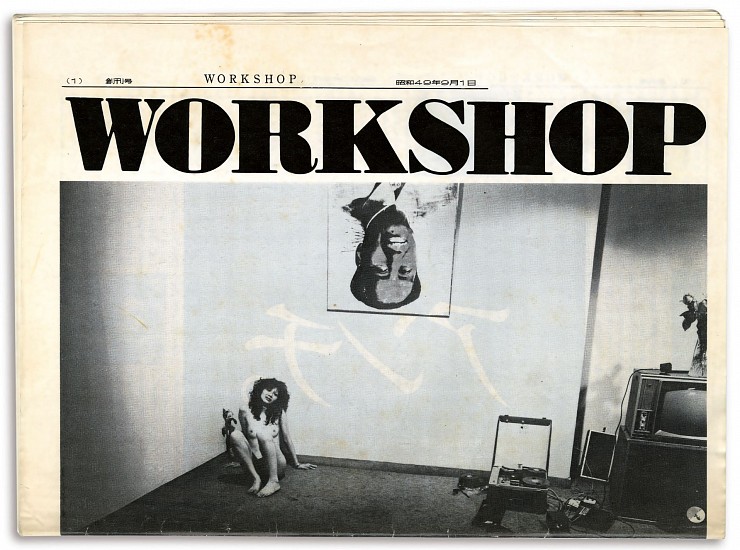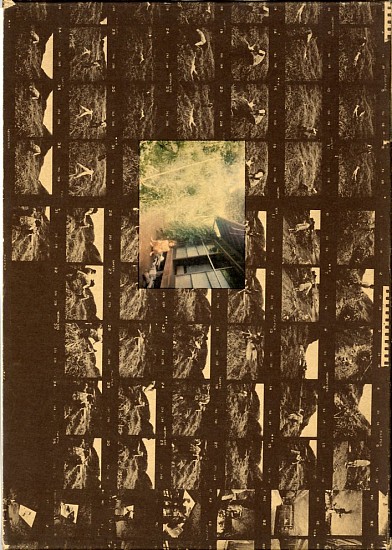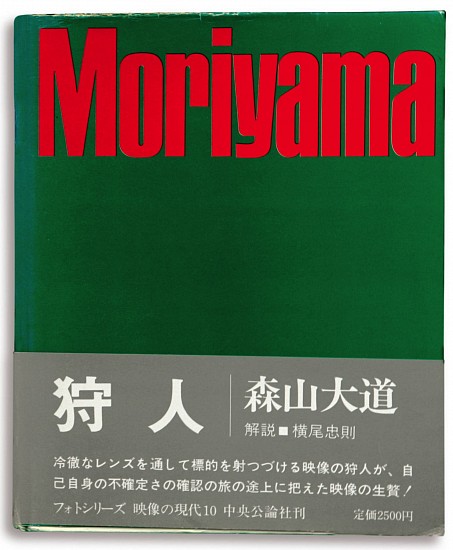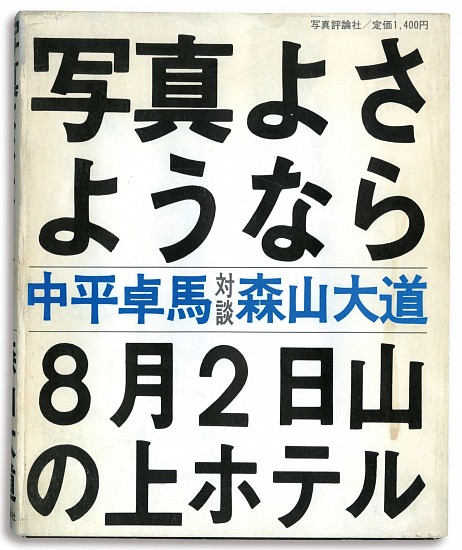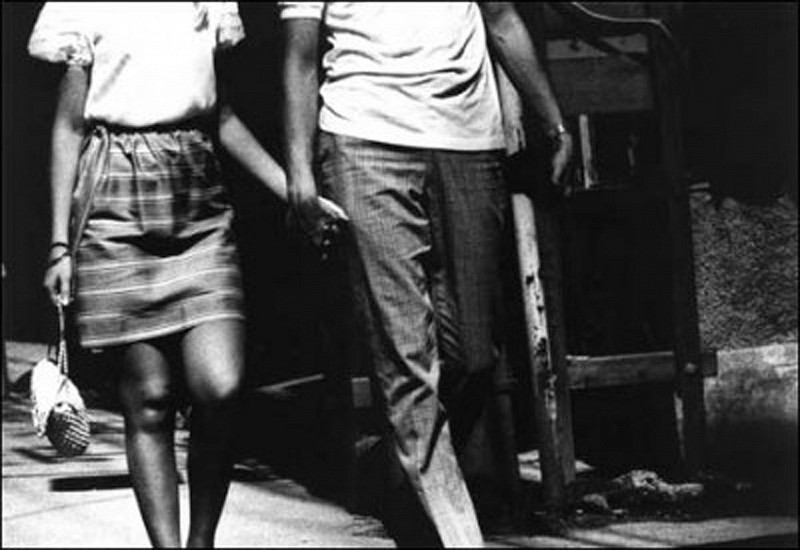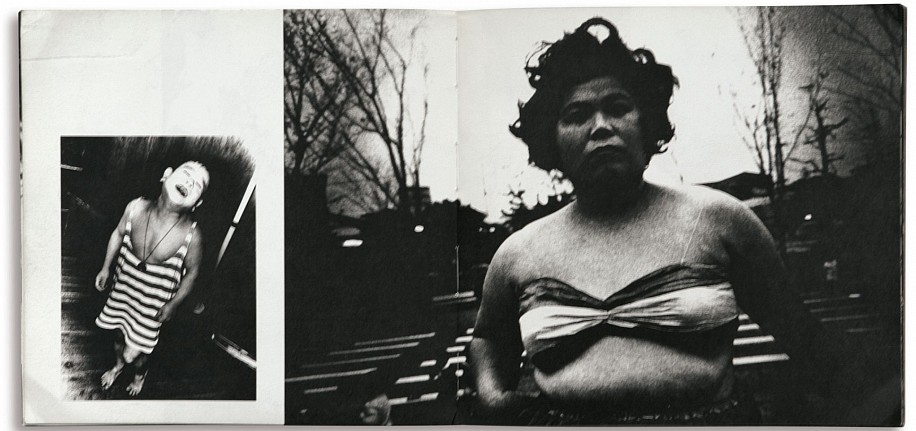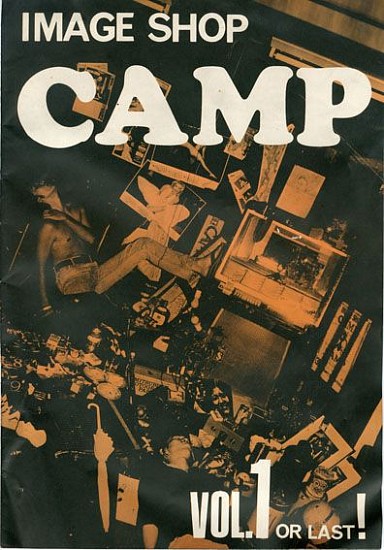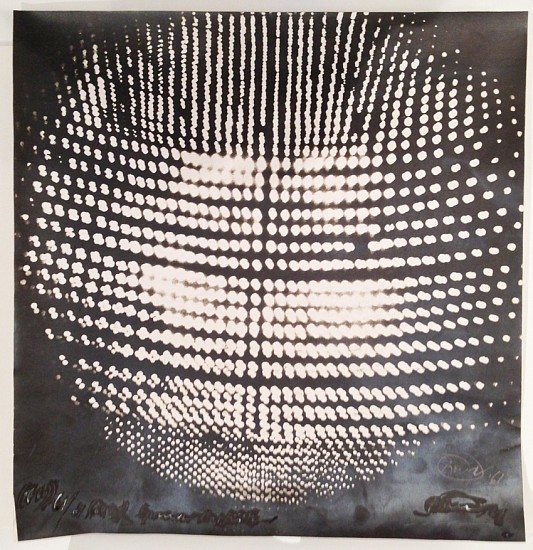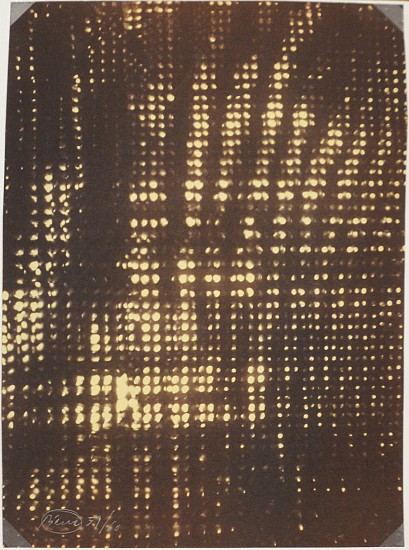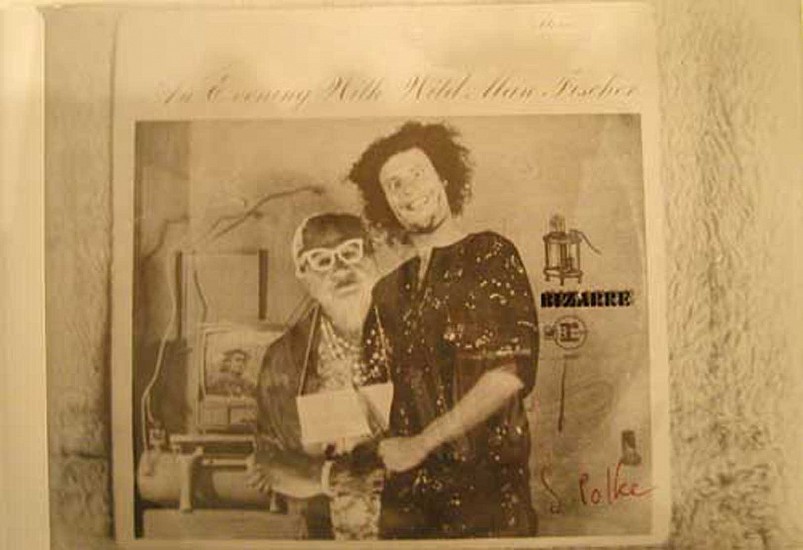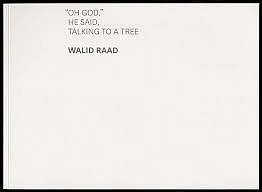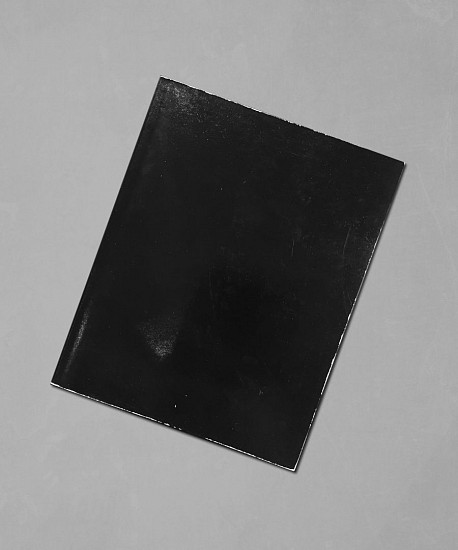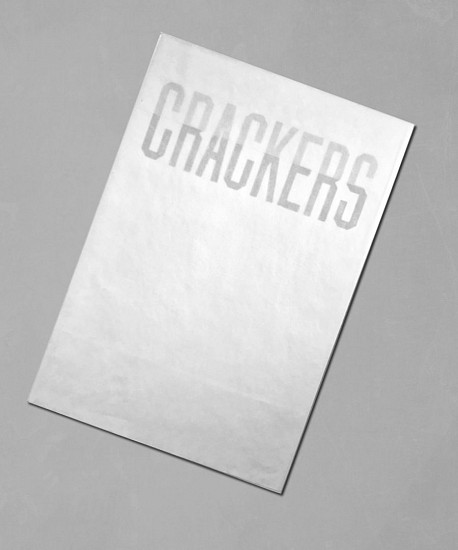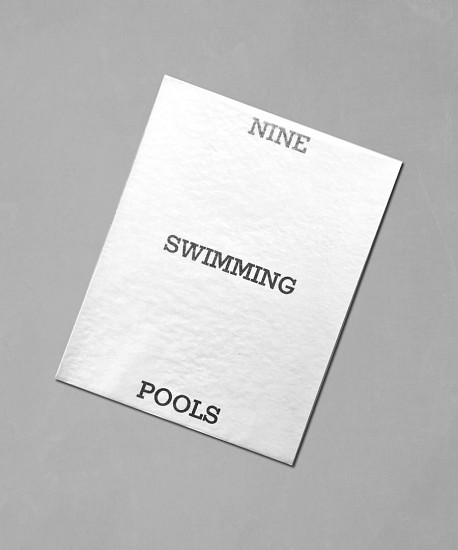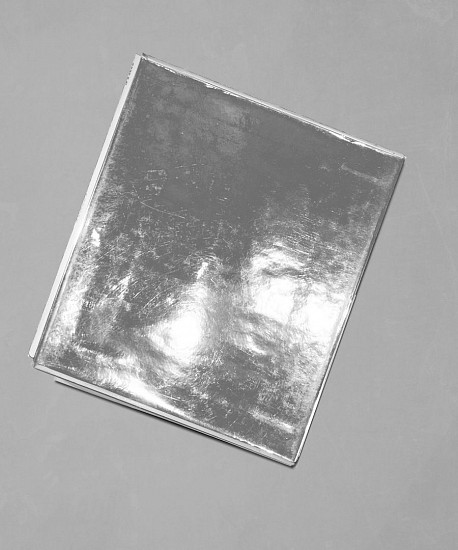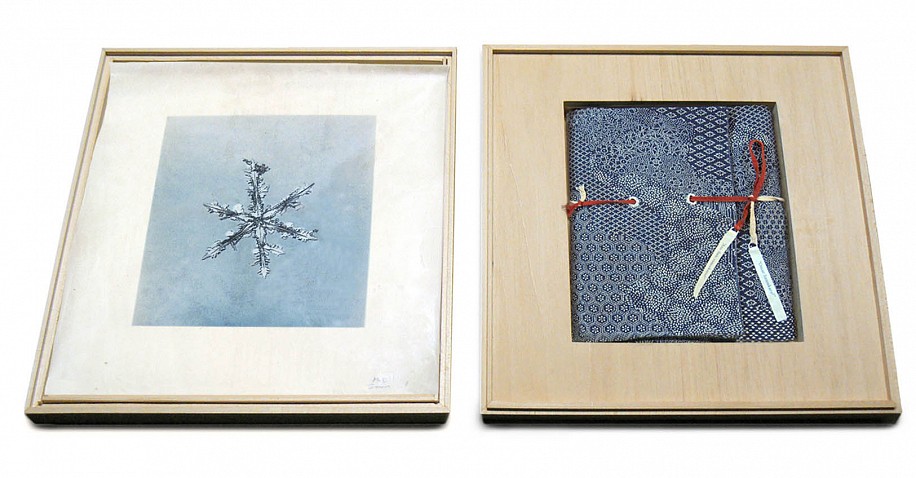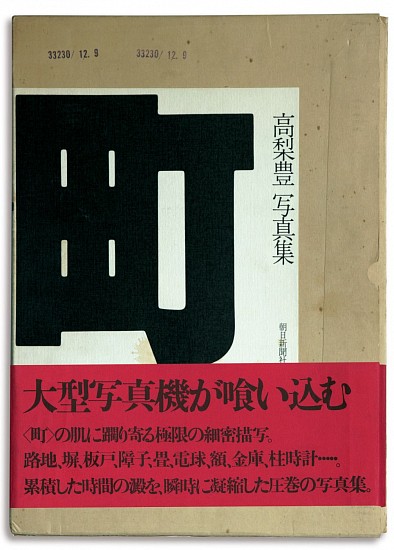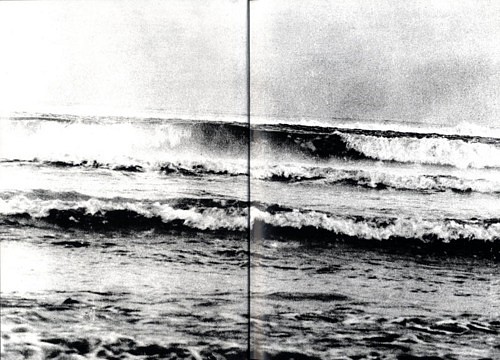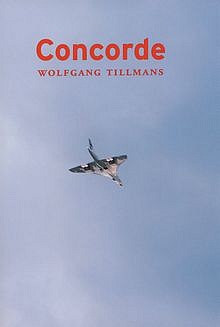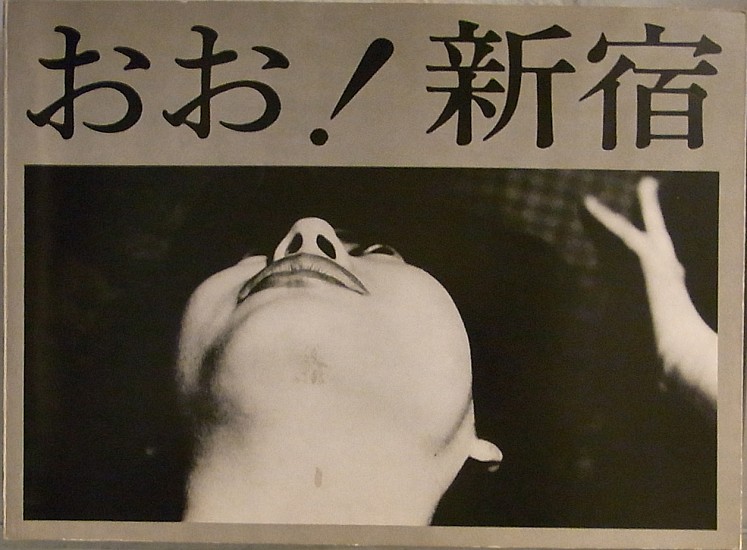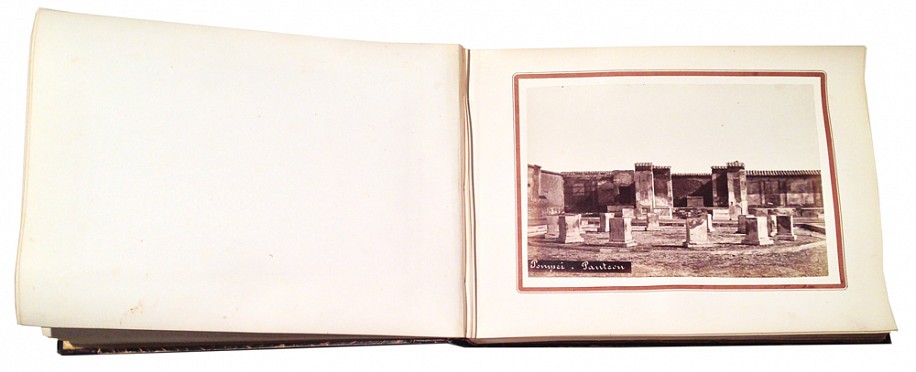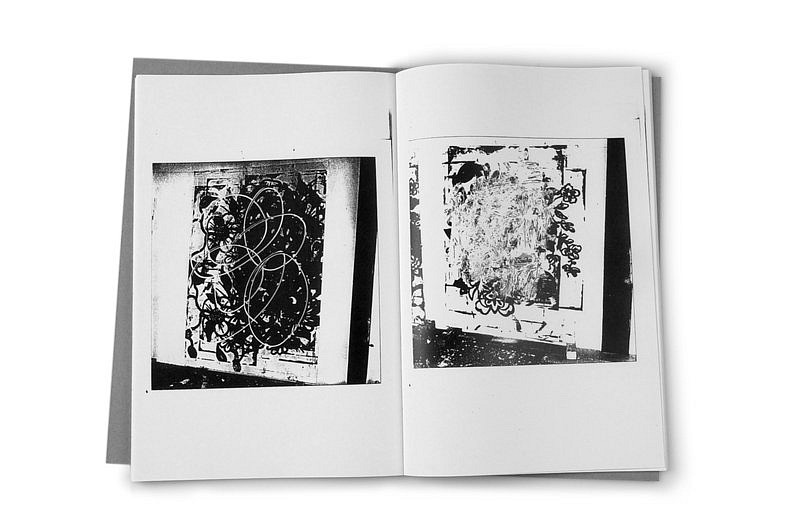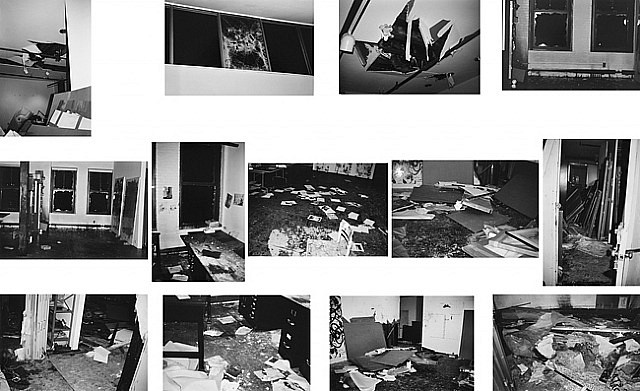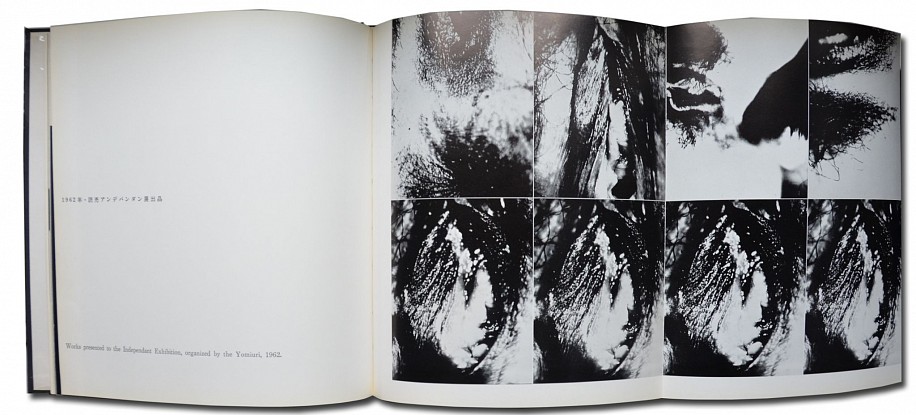Paris Photo 2012
Artist Collective
Provoke (3 vol.), 1968 - 1969
1786
Provoke 3: 1968. Taki, Koji ; Takanashi, Yutaka ; Nakahira, Takuma ; Moriyama, Daido ; Text by Yoshinmasu, poem by Okada. Paperback with printed cover. 239x185 mm (9,1/2x7, 1/4 in), 110 pp. Complete collection of this legendary publication (NB: Provoke 4 appeared in 1970, after the group fell apart) uniting the most innovative post-war Japanese photographers. Breaking tradition and taboo, Provoke presented a new style - violent, dirty, embracing the accidental, the blur and shadow of social critique.
Sold
Bernd and Hilla Becher
Wasserturme, 1988
1688
Signed by artists in pencil
Price Upon Request
Bernd and Hilla Becher
Set of first 15 editions, 1970-2005
810
Fachwerkhauser, Wasserturme, Anonyme Skulpturen, Hochofen, Fabrikhallen, Industrielandschaften, Typologien, Tipologie Typolhien Typologies, Forderturme, Forderturme Chevalements Mineheads, Zeene Hannibal, Pennsylvania Coal Mine Tipples, Die Architektur Dertorder Und Wassertume, Zeehe Zollern 2, and Gasbehelter
Price Upon Request
Bernd and Hilla Becher
Anonyme Skulpturen : A Typology of Technical Constructions, 1970
1694
Düsseldorf ART-PRESS Verlag, in association with Wittenborn and Co., New York. Bechers' FIRST major book containing 194 black and white photogravure plates and measuring approximately 11†x 9â€, the book is bound in navy blue cloth-covered boards with title stamped in white on the cover and spine and is covered with a photographically illustrated dust jacket.
The German husband and wife team of Bernd and Hilla Becher have spent 40 years documenting the relics of the receding industrial age, classifying these near –obsolete structures according to function: lime kilns, cooling towers, blast furnaces winding towers, water towers, gas holders and silos. In this, their groundbreaking first book, the Bechers established the disciplined approach they would follow throughout their career, objective, centered views made with large-format cameras and finely grained black and white film, working under overcast skies early in the morning during spring and fall only to insure a diffuse light with minimal shadows.
Price Upon Request
Mario Carrieri
MIlano, Italia, 1959
3785-BK
11 3/8 x 10 1/8 in. (29 x 25.8 cm)
135 black-and-white photographs printed in gravure, design by Giulio Confalonieri, Ilio Negri and Giuseppe Trevisani. . First edition. Carrieri was a leading photojournalist and cinematographer associated with the Italian neorealists. He was influenced by William Klein's 'Life is Good & Good For You in New York' and shared a similarly raw view, though his layout is slightly more restrained. Carrieri spent time photographing in the suburbs as well as in the centre of Milan, focusing his attention mostly on the less glamorous working side of this hard Italian city. 'One of the most important works of the neo-realist tendency of the 1950s' (Parr). In the same year as Milano, Italia, Klein published his own impressions of Italy in Rome: The City and Its People. [Parr, M. and Badger, G., The Photobook: A History Vol.I, p.214].
Price Upon Request
Wim Delvoye
seXrays, 2006
1737
12 x 8 3/4 in. (30.5 x 22.5 cm)
Luxembourg. Beaumont Public. 2002.
80 pages. With 25 reproductions on clear acetate of the X-rays, which were printed on aluminum.. Publisher’s spiral binding within printed boards. Black soft rubber end leaves. Published to accompany a 2002 exhibition in Luxembourg of Wim Delvoye’s s eXrays. Delvoye, with the help of a radiologist, had several of his friends paint themselves with small amounts of barium and perform explicit sexual acts in medical X-ray clinics. When he was not an active participant, Delvoye observed from a computer screen in another room, allowing the subjects enough distance to perform uninhibted, although Delvoye has described the whole operation as “very medical, very antiseptic.
With German text by Peter Bexte "Die Göttliche Komödie der seXrays", and a French text by Olivier Goetz "seXrays de Wim Delvoye: Un rayon de bonheur". Complete with the 15-page English translation bound in at the back.
Price Upon Request
Artistes Divers CONTEMPORARY
GRAPHIC SHÁ›DAN, 1960
3899-BK
No title (called : Maikurogurafikku / Shûchin bon, Micrographic / Miniature), 4 volumes ; Tokyo, self published (Graphic Shûdan), no date (1960), 84x80mm (slipcase), 76x76mm (book), 48p each volume, photographs by Shôzô Kitadai, Takashi Kiiima, Tadao Higuchi. Soft photographic cover, open slipcase, original cardboard ribbon. Direction, book design by Kitadai. Limited 1000 copies, numbered. Ref. Dict. of Japanese Photographers. Tokyo Metropolitan Museum of Photography, 2000, p.345. The Japanese Photobooks of the 1960s and 70s. Kaneko+Vartanian, New York, Aperture, 2009, p.46-49. Shozo Kitadai and experimental workshop, Taro Okamoto Museum of Art, 2003, p.126, (photographs) p.68-no.88, p.69-no.89. History of Japanese Photography, Houston, The Museum of Fine Arts, 2003, p.213. Graphic Shûdan was founded in 1953 with: -Photographers :Shôzô Kitadai, Osamu Hayasaki, Tadao Higuchi, Ken’ichi Hijikata, Takashi Kijima, Takeji Iwamiya, Kiyoshi Ôtsuji, Osamu Yagi -Graphic designers :Fumio Fushimi, Kôsaku Itô, Tadashi Masuda, Jô Murakoshi, Jun Ôtsuka, Ikkô Tanaka -Other Artistes :Hamao Hamada, Kiyoshi Hashimoto, Ayako Tsuji -Adviser :Shûzô Takiguchi. The group was created around Kitadai, a member of the Experimental Workshop (Jikken Kôbô) with cooperation of Ôtsuji, also a workshop member, and Shuzo Takiguchi, the founder of the workshop (He is a surrealist poet, a Contemporary Art critic, an adviser of almost all Japanese avant-garde artists, a bit like Duchamp). First published as a prototype of advertising, the books appear to be a showcase for experimental photographic methods with a taste of humor.
Price Upon Request
Peter Downsbrough
And, 1995
3711-BK
7 1/8 x 5 3/8 in. (18 x 13.5 cm)
Price Upon Request
Peter Downsbrough
Beside, 1976
3712-BK
6 3/4 x 4 1/2 in. (17 x 11.5 cm)
Sydney: Michael Hobbs. First Edition. 12mo. An artist's book interspersing typographical images of vertical lines (or steel piping) with their photographic corollaries; minimal text. Near fine in wrappers.
Price Upon Request
Peter Downsbrough
In Front, 1975
3710-BK
6 3/4 x 4 3/4 in. (17 x 12 cm)
Gent Belgium: Jan Vercruysse, First Edition. 12mo. An artist's book with a single photograph on the front cover; contents are repetitive vertical lines and typography riffing off the parallel steel rods of the cover image. Staple to the front cover, else near fine in perfect bound photo illustrated wrappers.
Price Upon Request
Peter Downsbrough
Two Pipes Fourteen Locations, 1974
3709-BK
6 3/4 x 4 3/4 in. (17 x 12 cm)
New York: Norman Fisher. First Edition. 12mo. An artist's book of 64 photographs of steel pipes in 14 documented locations. Undervalued, especially in relation to other similar artist's books of the same era. Near fine in stapled wrappers.
Price Upon Request
Tracy Emin
Exploration of the Soul, 1994
906
8 x 8 in. (20.3 x 20.3 cm)
Signed on inside with two original color photographs. Book is housed in a hand sewn white cloth bag with yellow letters "TE". Sold to fund a road trip undertaken by the artist from San Francisco to New York. Emin sold the book at galleries and other venues where she would give one-night performances reading from it.
Price Upon Request
Adam Fuss
All, 2007
1992
Small Folio. 14 four-color plates; bound tissue interleaving; stamped in silver holograpic foil; white paper covered boards; white hande-made paper jacket, stamped in silver holographic foil; fitted, protective vinyl.
Price Upon Request
Adam Fuss
ARK, 2007
1999
Large folio; 34 UV coated, color photographs; full-back leather; blind-stamped colophon on orange hand-made paper, laid into black hand-made paper covered clamshell box, black ribbon tie; illustrated label affixed to box recto.
Price Upon Request
Andreas Gursky
Montparnasse, 1995
3668-BK
19 1/2 x 11 in. (49.5 x 28 cm)
Two square quarto vols., and oblong folio photo-reproduction. Original silver coated wrappers, printed in black, original silver coated portfolio, printed in black, all laid into the original silver papered box. A fine copy, with the print in fine condition. First edition, offset lithograph in color, on wove paper, with text book and book of reproduction of blown up images. Andreas Gursky is a German photographer best known for his vast color architectural landscapes. His point of view is often so far from the object that it is difficult to tell what it is. In this photograph, hundreds of windows simply become tiny squares and lose their meaning as architecture.
Sold
Alfred/Alex Hartwich/Herlinger
Die Brautnacht and Flucht aus der Ehe, 1931
3967-BK
24 x 17 in. (61 cm)
(EROTICA) Illustrated with reproductions of erotic drawings, engravings, photographs in half-tone and gravure after works by Perckhammer, von Bayros, Willinger-Lechner, Manasse, Schein, and others. With eight color plates. 192 pp. With 6 mounted photographic prints. Original gilt-decorated green cloth, Compendium of historical, cultural, social and medical commentary on virginity and defloration, with chapters on anatomy, demi-vierges, infibulation, defloration technqiues. This volume in the "Legitimate Erotica" series includes a Photo Album "from the Estate of a Defloration Fetishist Who Committed Suicide," with six mounted plates of suggestively posed nudes. Ref.: Book of nudes by Bertolotti page 116-117. Ref.: Heidtmann, Wie das Photo ins Buch kam
Price Upon Request
INVADER
L'INVASION DE PARIS, 2004
1109
This first invasion guide presents the 500 first space invaders in the most invaded city in the world: PARIS. Pictures, location maps, archive images, score, index... This artist has attached his mosiacs all over Paris and has documented them with maps and photos very nicley in this book which comes with a unique mosaic on the cover. Also a small drawing of an Invader with the edition number.
Sold
Shinoyama Kishin
Sadistic play of Bondage., 1971
1934
A collection of bondage images, color and bw, with more humor than Araki, as evidenced by the color shots of tied-up Yakuza. The apotheosis in Japanese photobooks of bondage as theater. Little-known in the U.S., this book is every bit as good as Shinoyama's Hareta Hi. Included with this copy are two original vintage gelatin silver prints used for the publication. Near fine in wrappers in a near fine jacket.
Price Upon Request












Keizo Kitajima
Tokyo (12 Vol.), 1979
1766
Paperback with printed cover. Monthly publication from January to December 1979. Twelve volumes paying homage to "Shinjuku" by Katsumi Watanabe and "Bye, Bye Photography" by Daido Moriyama, (whose protégé is Kitajima) borrowing their aesthetic, texture, grain and their subject matter, nocturnal Tokyo.
Price Upon Request
Le Corbusier
Aircraft, 1935
3484-BK
9 7/8 x 7 5/8 in. (25.2 x 19.4 cm)
92 pages, 16 of text with 124 illustrations, most being photographs and some are reproduced drawings.
Published by The Studio, London.
Aircraft celebrates flight and casts the airplane as the pinnacle of modern technological achievement. The book captures the enthusiasm and ideas surrounding the aerial age. Le Corbusier opens the book by emphasizing the “ecstatic feeling†that flight produces in him. It is “symbol of the New Ageâ€, promising adventure, progress and wild possibility. He idealizes the aesthetics of the machines, too, which possess “clearness of function†(a core principle that underpinned Le Corbusier’s utopian architectural schemes). Le Corbusier’s captions are typically bold and uncompromising. The text that accompanies image 9, for example, reads: “The bird’s eye view … man will make use of it to conceive new aims. Cities will arise out of their ashes.â€
Reference: Fotografia Publica 132, p.81; Le Corbusier et le livre, p.122
Price Upon Request
Duane Michals
Journey of the Spirit After Death, 1971
1592
Inscribed, "For Lee Witkin, from your pal, Duane uane Michals, 7 Nov 72".
Price Upon Request
Jonathan Monk
None of the Buildings on Sunset Strip, 2002
1437
book with signed original photograph
Price Upon Request
Daido Moriyama
Record 9, 2008
2306
Nagasawa Akio. signed copy
Price Upon Request
Daido Moriyama
Record 8, 2007
2305
Nagasawa Akio signed copy
Price Upon Request
Daido Moriyama
Workshop. Nos. 1 - 8., 1974 –1976
1763
19 5/8 x 14 1/8 in. (50 x 36 cm)
Tokyo: Workshop Shashin Gakko, September 1974 –July 1976
Vols. 1 - 4: 50 x 36 cm; 19 ¾ x 14 ¼ inches; unbound broadsheet newspapers,
Vols. 5 - 8: 28.5 x 14.4 cm; 11 ¼ x 5 ¾ inches; in original stapled photo-illustrated wrappers.
Workshop was the eponymous journal of Workshop, a photography school where limited-enrollment classes were taught by a group of photographers—Araki Nobuyoshi, Shomei Tomatsu, Masahisa Fukase, Eikoh Hosoe, Daido Moriyama and Noriaki Yokosuka—beginning in April 1974. Each member of the group was given responsibility for a section of the magazine, which actively explored new trends in photography through essays and criticism (for example, the photographs in the final eighth issue are given over entirely to Seiji Kurata, and include unpublished photos plus photos that would later appear in his photobook Flash-Up). It was first issued as a tabloid on a limited subscription basis, but after the fifth issue, in October 1975, it was published as a magazine-sized photography collection. The school closed in March 1976, although the magazine continued for annual subscribers through the eighth issue in July.
Price Upon Request
Daido Moriyama
Kagerou (Mayfly), 1972
1758
7 3/8 x 10 5/8 in. (19 x 27 cm)
Tokyo: Haga Books.
114 photographic reproductions, of which fourteen are tipped-in color plates. Original stiff wrappers, with paper-covered slipcase and printed bellyband. This copy inscribed by Daido Moriyama in black pen (in both English and Kanji)
The publication is exceptional amongst Moriyama's output as much for his seminal use of color, as for the book's eroticism. Moriyama's fourth book features nudes, the majority being bondage scenes. Having taken its title from the Japanese word for “mayflyâ€, the series captures fleeting and momentary scenes of females bound in Kinbaku (rope bondage). While similar in theme to much of Araki's work, the figures in these photos are removed from their context of the red-light districts of Tokyo, and Moriyama now sets the women against outdoor landscapes and leafy backgrounds. Raw and unchoreographed in their manner, the images relay a disquieting sense of anticipation throughout each scene. The images are somewhat grounded by a section in the center of the book that reproduces contact sheets showing images from the shoots.
Price Upon Request




Daido Moriyama
Karyudo (Hunter), 1972
1759
Hardcover with authors name printed on the dust jacket. Comes with bellyband. 104 black and white photographs with a text by Tanadori Yokoo. Most of Moriyama's cult images are featured in this special monograph of the photographer's work.
Price Upon Request




Daido Moriyama
Shashin yo Sayonara (Bye Bye Photography), 1972
1760
7 1/4 x 9 in. (18.5 x 23 cm)
Tokyo: Shashin Hyoron-sha.
137 double-page black-and-white photographs printed in rich gravure. Original wrappers, with printed dust jacket. Includes 32 pages of dialogue between photographers Takuma Nakahira and Daido Moriyama.
This is the most emblematic of Provoke photobooks, in which the aesthetic principles of the movement are best expressed. Moriyama pushes the boundaries of the medium: assembling images from a variety of sources, placing them in a discordant anti-sequence, with an array of full-page grainy, blurry, and sometimes indecipherable pictures. The images were further manipulated in the dark room, in a way that results in high contrast prints with a harsh coarse grain. This rough style became somewhat of a trademark and found wide appeal with a new Japanese generation.
Shashin yo Sayonara was produced as a result of a discussion Moriyama had with Takuma Nakahira in the Hilltop (Yamanoue) Hotel in Tokyo in August 1972. The two had been friends since 1964 and both had contributed to Provoke magazine. The argument centered on the function of photography to reflect reality.
“Shashin yo Sayonara (Bye Bye Photography) is the most extreme monument of the Provoke period, indeed it is one of the most extreme photobooks ever published. Daido Moriyama pushes both the form of the photographic sequence and the photograph itself to the limits of legibility, with a brilliant barrage of stream-of-consciousness imagery culled from his own pictures, found photographs—such as shots of car accidents—and images taken from the television set. Any notion of ‘good’ technique is thrown out the window. The pictures exhibit all the qualities of reject negatives discarded in the darkroom then retrieved from the bin. The photographic language is one of blur, motion, scratches, light leaks, dust, graininess and stains ... The pace is frenetic, the image bombardment never lets up, and we reach the book's end in a state either of breathless exhaustion or on an image-fuelled high.†(Parr & Badger)
[Ref. Martin Parr & Gerry Badger, The Photobook: A History, vol.I, pp. 298-299; Andrew Roth, The Book of 101 Books: Seminal Photographic Books of the Twentieth Century, pp. 218-220; Andrew Roth, The Open Book: A History of the Photographic Book from 1878 to the Present, pp. 290-291; M. Auer, 802 photo books from the M. + M. Auer collection, p. 543; Ryuichi Kaneko & Ivan Vartanian - Japanese Photobooks of the 1960s and ‘70s, p. 29]
Price Upon Request
Daido Moriyama
On the Road, 1969
1783
Newpaper book with Silver Gelatin Print
Price Upon Request
Daido Moriyama
Nippon Gekijo Shashincho (Japan A Photo Theater), 1968
2185
8 1/4 x 8 5/8 in. (21 x 22 cm)
Paperback, title printed on the green cover, in its original cardboard slipcase. 149 black and white photographs printed using the heliogravure method. Text by Shuji Terayama. This is the first publication entirely devoted to Moriyama's work. Images are violent and dark. Deeply influenced by William Klein's New York, Moriyama transforms texture, contrast, deformation, the accidental, and abstraction into a visual language representative of the Provoke movement in Japan.
Price Upon Request
Moriyama, Daido & Kitajima, Keizo
Image Shop Camp, Vol. 1 or Last!, 1980
2098
lllustrated with reproductions of photographs celebrating the opening of Camp Gallery, and announcing future exhibits. Folio, photo-pictorial wrappers. This is the first and only edition of this magazine published by the Japanese photo group and gallery, Camp, which was founded by Moriyama and featured Kitajima as the first exhibitor. This large-format publication features an innovative blend of post-Provoke images and graphic elements.
Sold
Otto Piene
Ohne Titel, 1960/61
4121-PH
13 3/4 x 13 3/4 in. (35 x 35 cm)
Unique silver gelatin print made from a diazotype negative.
Sold
Otto Piene
Ohne Titel, 1959/60
4120-PH
15 3/4 x 11 3/4 in. (40 x 30 cm)
Unique diazotype
Sold
Sigmar Polke
Bizarre, 1972
1086
Containing 42 offset litho prints of photographs taken by Polke in Cologne and Dusseldorf during the 1972 West German general election.
Price Upon Request
Walid Raad
Oh God, he said, talking to a tree, 2010
3707-BK
11 1/4 x 8 1/4 in. (28.7 x 21 cm)
Limited Edition in 29 copies all numbered and signed by Walid Raad. 29 photograph of bombing during Lebanon war, taken between April 10, 2002 and August 8, 2006. The date and place of the bombing are shown each time in tiny letters in the lower right part of the page. The height of the letters corresponds to the size of a standing man, thus giving the scale of the explosion. Each book is covered with a wrapped, title in screen-printing grey. Inside the folder, an original photography corresponding to one of the 29 bombing. Each photograph are different. Digital print, numbered 1/1. Franck Bordas made the print on Hahnemulhe paper photo rag 300g.
Sold
Ed Ruscha
A Few Palm Trees, 1971
1537
7 x 5 3/8 in. (17.8 x 13.9 cm)
Hollywood: Heavy Industry Publications, self-published.
3900 copies. 14 illustrations of Hollywood palm trees with their locations. [34] pp. + 15 blank leaves. Glossy black wrappers.
Very good condition. 17.8 x 13.9 cm. Engberg B13.
* Inscribed “Best wishes Henry and Jan (Butterfield), Edâ€
Price Upon Request
Ed Ruscha
Crackers, 1969
1539
8 5/8 x 5 7/8 in. (22.2 x 15 cm)
Hollywood: Heavy Industry Publications, self-published.
1650 copies with dust jacket on coated label paper with varnish overprint (total edition 5000). 115 illustrations. [240] pp. Wrappers. Documents an elaborate performance piece involving a very large salad, five gallons of salad dressing, a bed in a Skid Row hotel, a chic, sophisticated, hard-to-get woman, and, finally, a small box of saltines. The players are Larry Bell, Léon Bing, Rudi Gernreich, and Tommy Smothers. Photography by Ken Price, Joe Goode, Edward Ruscha. Story by Mason
Williams. Light wear. 22.2 x 15 cm. Engberg B10.
* Inscribed “For Henry down in Texas! Love, Edâ€
Price Upon Request
Ed Ruscha
NINE SWIMMING POOLS AND A BROKEN GLASS, 1968
1538
7 x 5 1/2 in. (18 x 14.2 cm)
Los Angeles: self-published. 2400 copies. 9 color plates (1 double spread). [64] pp. (last 19 and several others blank).
Very slight browning of glassine; otherwise, as new. 18 x 14.2 cm. Engberg B8. * Inscribed “For Henry! Ed Ruschaâ€
Price Upon Request
Ed Ruscha
Every Building on the Sunset Strip, 1966
1536
7 x 5 1/2 in. (17.9 x 14 cm)
Los Angeles: self-published.
54-panel accordion-fold book with continuous photographic illustrations at top and bottom depicting south and north sides respectively of the Sunset Strip, from Schwab’s Pharmacy on the east to the Jaguar agency on the west. In white board slipcase covered with reflective Mylar.
1000 copies of the first edition printed, according to a letter in accompanying archive from the artist dated October 8, 1966. Later printings often are erroneously offered as the first.
The first state has a final half-page verso showing the end of the Jaguar building and the adjacent street.
In very good condition. 17.9 x 14 cm folded (unfolded, about 7.61 meters or 24.35 feet long). Engberg B4.
* Inscribed “Hey Henry- Best, Ed Ruscha Oct. 66â€
Price Upon Request
Mike & Doug Starn
Ani-San, samukaro? Omae samukaro?, 2007/2008
2174
40 pages with 19 B&W Illustrations, each wrapped in a unique vintage kimono fabric each having one photograph from the book on gampi paper with encaustic, signed and numbered housed in a bass wood box. A hand crafted bass wood Japanese box houses a unique signed photograph; inkjet on gampi paper, hand coated with encaustic, under which the book is found wrapped in an indigo vintage kimono fabric. The package is tied with red and white cords, each one with a small paper flag inscribed with a question from the title. The story reveals the significance of the book wrapped in a threadbare kimono under the snow. Each book is hand-made, thread bound using traditional Japanese techniques, with 19 photo- micrographs of snow crystals that were shot by the artists during snowstorms between 2004 and 2006. The images are printed on gampi paper, the back of each image is hand-painted with white acrylic and then finally the image is brushed with a single stroke of varnish. A signed colophon is inside the box.
Price Upon Request





Yutaka Takanashi
Machi (Town), 1977
1764
11 3/4 x 16 1/2 in. (30 x 42 cm)
Tokyo: Asahi Shibun-sha.
Full-bleed color photographic reproductions throughout. Bound in original cloth, with acetate dust jacket and a 12-page supplement loosely inserted; housed in cardboard slipcase with printed bellyband; design by Kamegai Shoji. The supplementary brochure provides photographic captions and a biographical profile of the photographer.
Immediately after the publication of Toshi-e, Yutaka Takanashi changed his style of photography fundamentally. Instead of the moving 35mm camera, Takanashi switched to a large plate camera. In his second book, Machi, Takanashi shows the vanishing prewar Tokyo. In precise Cibachrome prints, Takanashi describes the narrow suburban streets where old-fashioned wood and brick buildings are home to small shops and businesses. The book captures the charm of the old shitamachi (lower class) neighborhoods of Tokyo, here shown without the presence of humans. The change in photographic techniques is indicative of Takanashi’s rational use of the medium of photography. All of the color images were taken with a large-format camera mounted on a tripod often using extremely long exposure times (up to 20 minutes). Such a plate camera enabled Takanashi to create a precise document of what he saw, and to make time stand still long enough to gaze on the last remnants of traditional life and architecture, doomed by the breathless pace of change in Tokyo and Japanese society.
Price Upon Request
Nakahira Takuma
Kitarubeki Kotoba no Tameni. For a Language to Come, 1970
2180
12 x 8 1/2 in. (30.5 x 21.6 cm)
Paperback with an illustrated cover and dust jacket. Original cardboard slipcase with title and name of author printed on the covering sticker. 103 black and white photographs printed using the heliogravure method. Text by Okada Takahido. Graphic concept by Kimura Tsunesisa. Nakahira was the instigator of the movement PROVOKE and, in a sense, its political conscience. This work reflects the best of the group's aspirational work even though it appeared well after they split up. Mainly nighttime photographs, these images taken between 1965-1970 have great expressive and lyrical force.
Price Upon Request


Wolfgang Tillmans
Concorde, 2008
3725-BK
Paperback. 160 x 240 mm (9 1/2 x 6 1/2 in). 128 pages. 63 colour photographs.
Price Upon Request
Shomei Tomatsu
Oh Shinjuku., 1969
1931
Paperback with illustrated cover. 120 black and white photographs with the text by Shomei Tomatsu at the end of the publication. That this publication appeared at the same time as the second issue of Provoke is no coincidence. The photographer's exploration of the Shinjuku district focuses on similar subject matter, namely sex, drugs and underground lifestyles. Nevertheless, Tomatsu's work contrasts with that of Morriyama or Nakahira in its clarity and precision.
Price Upon Request
Old & Rare UNKNOWN
Pompei, 1900
4083-BK
Album of 80 photographs of Pompei from the early 20th century.
Price Upon Request
Christopher Wool
Maybe Maybe Not, 2001
4138-BK
Signed Artist book edition of 300 copieser 181 of 300. Numb
Price Upon Request
Christopher Wool
Incident on 9th street, 1997
3765-PH
13 silver gelatin photographs in an edition of #7/12 signed and dated
Sold
Yoshioka Yasuhiro
Yasuhiro Yoshioka 1963, 1963
811
The photos in this book were not allowed to be shown in the Yomiuri Andepandan exhibition because his pictures were thought to be sexually explicit. Inscription to Mr.Kato from Yoshioka thanking him for buying the book. Yoshioka made the book without sponsor or publishing company.
Price Upon Request


















































